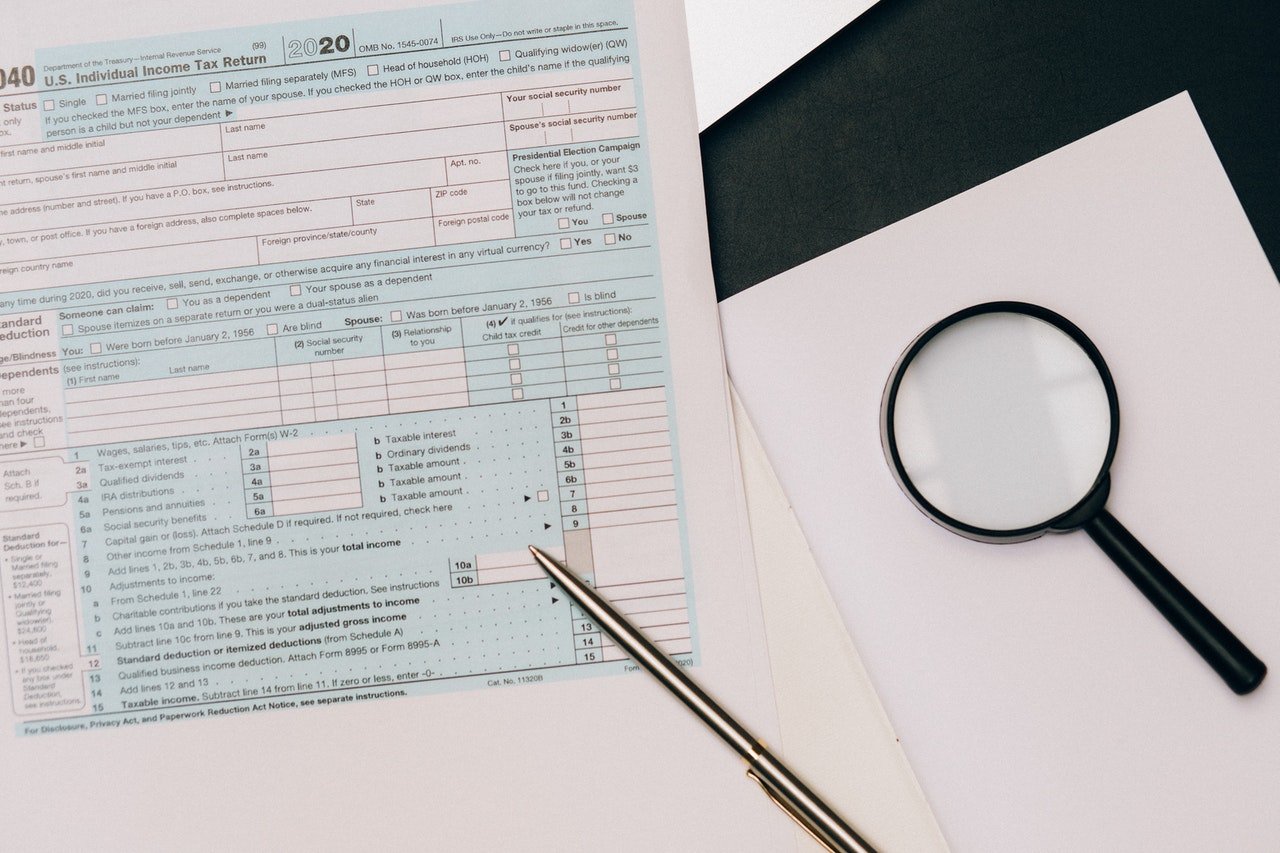Small businesses have to deal with plenty of problems during their first years of operation, and they are also required to comply with federal, local and state tax requirements. In addition, because these requirements can change independently of each other, it’s essential to be up to date with the most recent modifications issued by legal authorities.
Depending on the state, there will be different regulations you must comply with. Some states have simpler tax laws (commonly referred to as business-friendly states), while others make business owners deal with more stringent regulations or higher tax rates on the state level.
As we know you have a hectic schedule, our experts have prepared a complete guide to help you understand how to calculate small business taxes. This allows small business owners to understand tax liability and what S Corporations / C Corporations are.
Table of Contents
GET YOUR WEBSITE IN A FEW CLICKS
What taxes exist in the U.S.?

Although each state has its own specific tax law, most states operate under a similar situation. That is to say; there are several types of taxes you will find regardless of the state your business is based in. Below you will find a brief explanation of how exactly each type of tax works and its purpose.
Income Tax
Most businesses have to pay a tax for any income they earn during a particular year, including donations, payments for products or services, etc. This amount varies according to the specific state law and is calculated by analyzing how much income your business generates within a quarter. However, the total tax may be slightly different from the estimated taxes because of the constantly changing legislation.
Self Employment Tax
If you own a business, you will have to pay self-employment tax, which includes two distinct aspects: Medicare and Social Security. When working for a company, that specific company pays for your medical services and social security. However, things change when you work for yourself, meaning that you will have to pay these two business expenses.
The amount you have to pay self-employment taxes goes up to 15.3% of your income. This value is divided into two separate sections: 12.4% for S.S. (old age, disability and survivors insurance) and 2.9% for Medicare (hospital insurance).
You are obliged to pay the self-employment tax (Medicare tax plus Social Security) if at least one of the two conditions described below apply:
- You are a small business owner who had net earnings of at least 400 U.S. Dollars
- You made at least 108 U.S. Dollars as a church employee
Employment Taxes
If you have a small business with other people employed, you will have to pay particular employment taxes for each one of them. This usually results in a higher cost per employee, but that depends very much on the net business income your company makes within a quarter. These employment taxes include three distinct types of taxes:
- Medicare and Social Security Taxes
- Federal Income tax withholding
- Federal Unemployment (F.U.T.A.)
The third section of the employment taxes is said to be the most important. The Federal unemployment tax (F.U.T.A.) makes sure people can and will receive unemployment benefits after losing their job.
Excise Tax
Excise taxes are federal taxes that have to be paid by small business owners who produce and sell products. If your company uses specific equipment to create a product and then sell it, you might pay an excise tax. For example, if you need vehicles (tractors, trucks or buses) with a taxable gross weight of more than 55 000 pounds, then you will have to file a form (Form 2290). This is an example of equipment considered to be special which requires business owners to pay excise tax.
Another commonly encountered situation is related to oil spills. For example, if your company uses large amounts of oil to be removed and discharged, you will have to pay excise taxes and fill another particular form.
Property Tax
Property is defined differently in each state. Depending on what state you live in you might have to pay property taxes for your vehicle, real estate apartments or even for your computer devices. Federal income taxes regulate taxable income distinctly so you should learn more about how it works in your state.
In other words, after a treasury analysis, it is concluded that your C Corporation has real estate properties that increase its value; you will surely notice a tax increase after updating the filing status of your taxes.
Sales and Use Tax
Certain states collect taxes for selling and using particular products. Therefore, your company’s net income is correlated with the business expenses and helps you generate a more accurate tax bill. Generally,food, clothing, medicine, newspapers and utilities are not included in this small business total tax rate.
Depending on what state you live in, you might have to pay this tax for goods and services that have been bought from outside of the state but used inside of it.
Estimated Tax
These tax payments are quarterly payments that cover your net income taxes that are not federally withheld. Estimated payments are very different from one state to another in matters of procedures. However, if your withheld amount does not cover the taxes you owe, you will have to process estimated tax payments.
These business taxes are to be paid before the end of each quarter (April 15, June 15, September 15, January 15).
What taxes do you have to pay?

Depending on the type of business model you have chosen when you have first started your business, there are certain taxes you will have to pay. According to U.S. regulations, there are five distinct types of business structures available to the public. Each structure comes with particular advantages and disadvantages but choosing the one that fits your company the best is a crucial step you have to take. Making a mistake at the very beginning of your business career will usually result in you paying taxes you could avoid and losing a significant part of your net income.
The five business structures available in the U.S. are:
- Sole Proprietorships
- Partnerships
- C Corporations
- S Corporations
- Limited Liability Company (LLC)
Let’s see how each model is affected by the new tax regulations and which taxes you would pay quarterly.
1. Sole Proprietorships
The sole proprietorship is one of the most common business structures used by U.S. individuals to start their own company. It means you run the entire business by yourself, without having to hire any other people. After registering your sole proprietorship to I.R.S. (Internal Revenue Service), you will instantly get an Employer Identification Number (E.I.N.). This code will help you identify your business self and allow you to perform actions in the name of the sole proprietorship. What is more, when paying taxes, you will have to use this code to identify the business you are paying for.
If you are a sole proprietor, you will have to pay the following taxes:
- Federal income tax
- Self-Employment Tax (Medicare taxes and Social Security)
- F.U.T.A. (Federal Unemployment Tax)
- Excise Taxes (if necessary)
- Estimated Tax
2. Partnerships
Partnerships are relationships between 2 or more people who unify their efforts into trading or doing business. All parties share both the profits and the losses of the business, according to the initial agreement.
Partnerships must report the annual income at the end of the tax year. However, there is no partnership tax liability, as the tax rates do not apply to this business structure. Instead, the parties have to divide the business’s total income and report their personal income at the end of the tax year using individual income tax returns.
Therefore, while being part of a partnership, you will have to be aware of the following taxes:
- Income tax (for taxable income)
- Self-employment income tax
- Estimated tax
- F.U.T.A.
- Excise Taxes (if necessary)
3. C Corporations
Corporations are bigger partnerships where parties exchange money and other assets for the capital stock. For example, you and a friend invest $5,000 each in a C Corporation. Therefore, you will each have 50% of the corporation’s capital. However, if you invest $7,500 and your friend only invests $2,500, then you will have 75% and he will have 25%.
When it comes to the small business tax rate for C Corporations, corporate income tax is applied once on the profit and once after it is divided to its shareholders. This means that the corporate tax rate is applied two times. Yet, the corporate income tax does not include any potential losses the company encounters.
Small Corporations will have to deal will a smaller number of taxes:
- Business Income tax
- Medicare Taxes
- Social Security Taxes
- Estimated Tax
- Excise taxes (if necessary)
4. S Corporations
S Corporations are domestic corporations that their shareholders legally represent. Before becoming a special corporation, a business must comply with the I.R.S’s rules. Therefore, according to the up to date regulations, to become an S corporation must meet the following requirements:
- Be a domestic corporation
- Only have allowable shareholders
- Not partnerships, other corporations or non-resident shareholders
- Have no more than 100 shareholders
- Only have one class of stock
- Be an eligible corporation
Small S corporations must comply with the following taxes:
- Business income tax
- Estimated tax
- Employment
- Medicare
- Social Security
- F.U.T.A.
- Excise tax (if necessary)
What are tax brackets?

Tax brackets are revenue intervals that are subject to different levels of tax. Higher revenues are taxed more, while smaller gains are taxed less. If your small business is a Sole Proprietorship, a Partnership, or an LLC, you will not have to pay business taxes, because the owners (aka you) are in charge of paying the taxes as individuals.
If your small business is one of these entities, you can estimate the tax brackets using the following information:
- $0 – $9,700 (10% tax)
- $9,701 – $39,475 (970 $ + 12% of the remaining amount)
- $39,476 – $84,200 ($4,543 + 22% of the remainder)
- $84,201 – $160,725 ($14,382.50 + 24% of the remainder)
- $160,726 – $204,100 ($32,748.50 + 32% of the remainder)
- $204,101 – $510,300 ($46,628.50 + 35% of the remainder)
- Over $510,301 (153,798.50 + 37% of the remainder)
In other words, if your business makes $9,500, you will have to pay 10% of that amount ($950). However, if you make $19,500, you will have to pay $970 (10% of the first tax bracket) and 12% of the remaining $10,000 ($1,200).
Frequently Asked Questions (F.A.Q.)
What is the tax bracket for a small business?
The tax bracket is a system that taxes income differently according to how much money a small business (or an individual) makes yearly. It is an excellent way of making sure those who do not make that much money do not have to pay as much as the wealthy ones while still ensuring full-forward velocity in matters of national development.
How do I calculate small business taxes?
You can calculate your small business taxes either by yourself or by hiring accounting professionals. If you choose to figure everything by yourself, you will have to make sure you completely understand all the taxes you have to add and consider all the tax cuts applicable to pass-through entities (LLCs, partnerships, and sole proprietorship).
What is the income tax rate for businesses?
The income tax rate is a percentage of the income of small businesses that must be transferred to the I.R.S. annually to ensure all the taxes are paid according to the up-to-date regulations.
Do small businesses pay taxes on revenue or profit?
Small businesses are taxed based on gross profit. In other words, before calculating the amount of money that should be taxed, the I.R.S. also deducts claimed business expenses. Therefore, it is Income – Expenses = Profit. All the taxes are calculated using the Profit amount.
The Final Word
While this might seem like a lot, small business taxes get a lot easier when you know more about the different business structures and the taxes each is responsible for.
It’s important to make sure that the type of small business you create matches how you want to run your business. For example, if you are a freelance graphic designer, you might want to act as a sole proprietorship, because you can pay your own taxes and will have comparatively easy accounting to do.
However, if you grow your business and have multiple people working for you in your Digital Marketing company, an LLC might be the best option. Either way, it depends on the needs and the expectations of your company.
No matter which legal form have you chosen for your business – you will need a digital presence. Therefore, we highly encourage you to take a quick look at UENI. It is an excellent option for those who are not sure how to start their first small business and successfully manage it. Besides all the core features of the tool (website builder, SSL hosting and Google My Business listing), there are even more functions that will improve your small business.
How we sourced our guide
As this is a law-related topic, we based this guide on up-to-date legislation and regulations regarding small business tax rates. Among the most important resources we relied on were:




